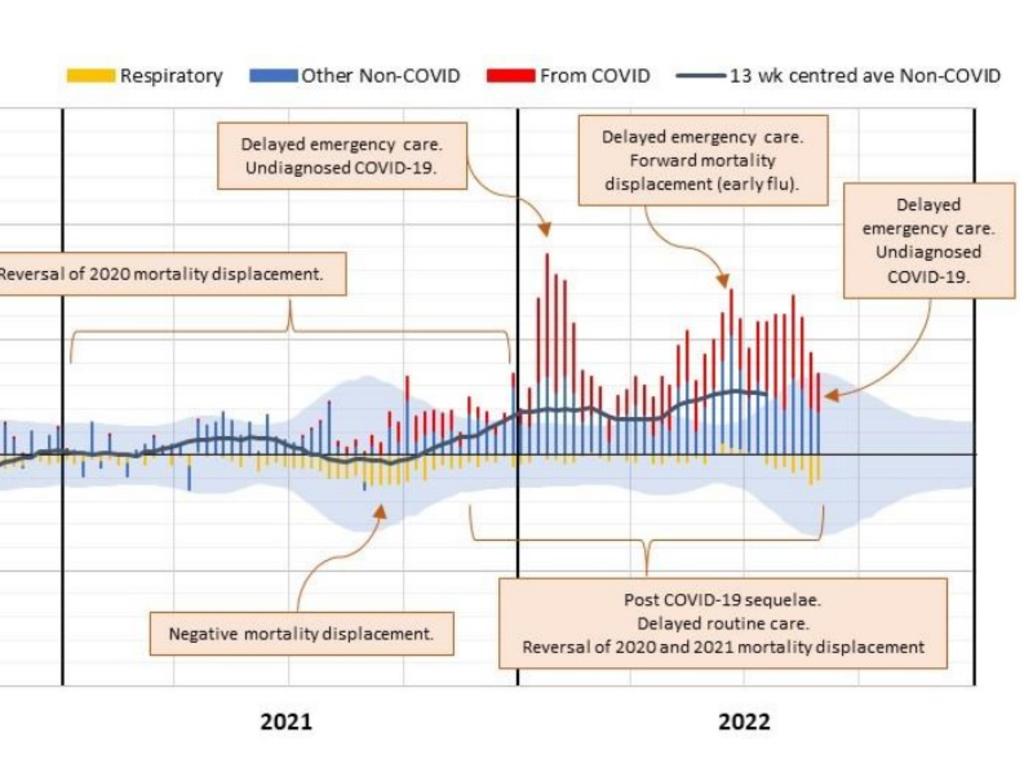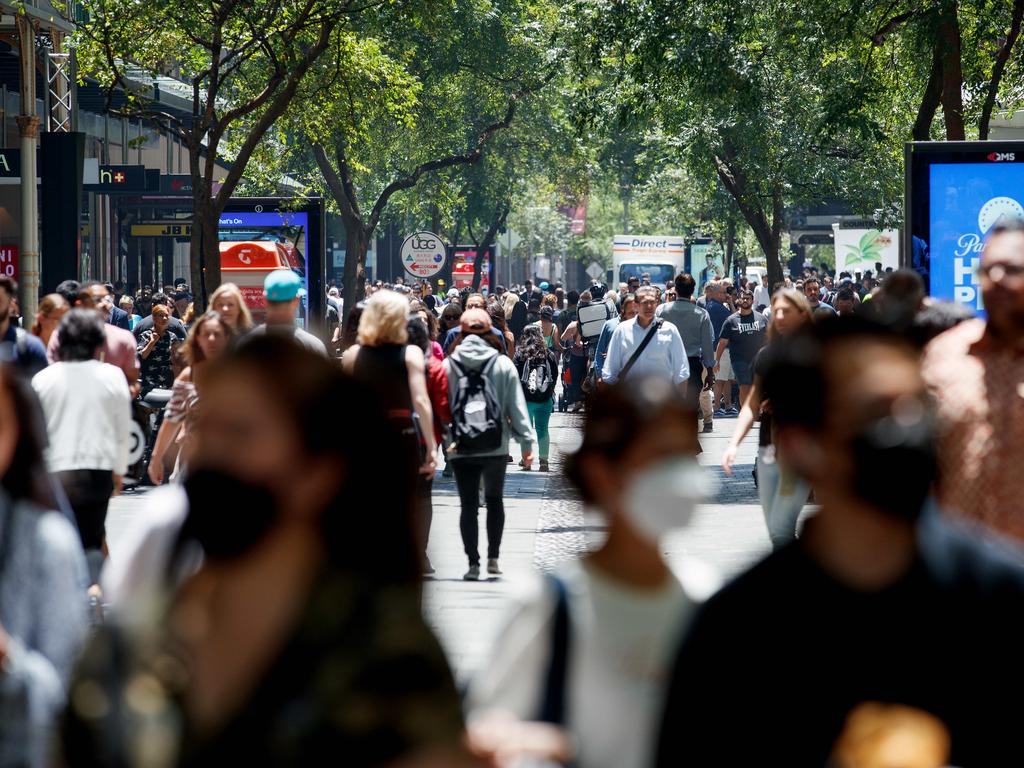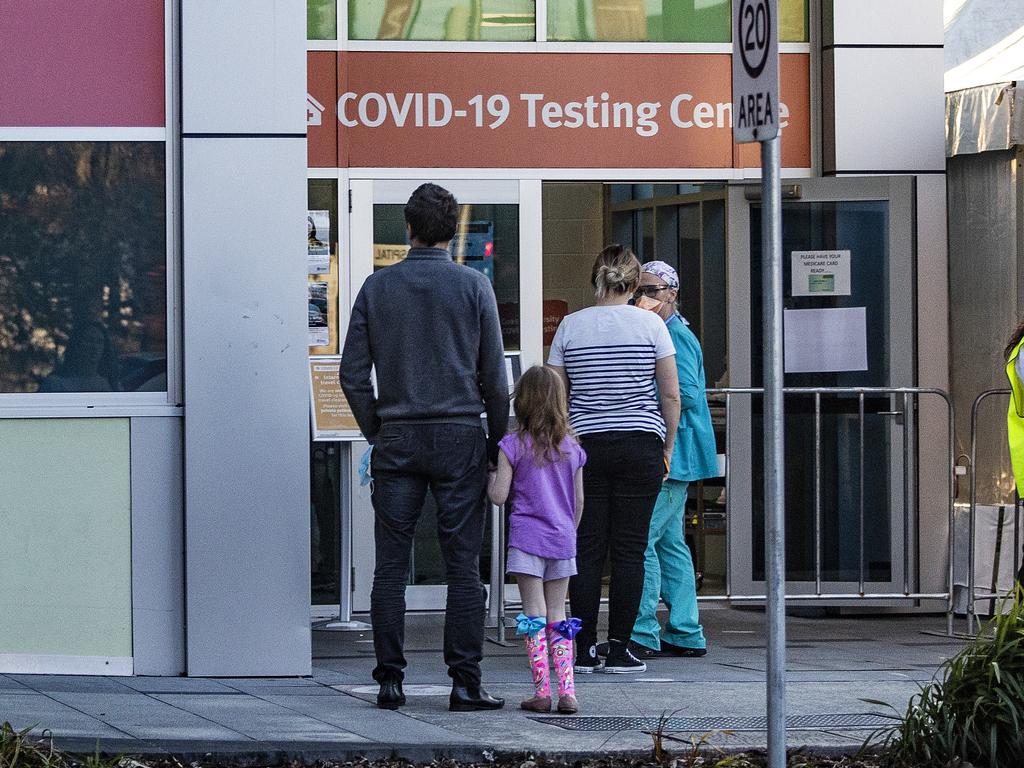Excess deaths in 2022 ‘incredibly high’ at 13 per cent
The Australian government should be urgently investigating the “incredibly high” 13 per cent excess death rate in 2022, the country’s peak actuarial body says.
The Australian government should be urgently investigating the “incredibly high” 13 per cent excess death rate in 2022, the country’s peak actuarial body says.
An extra 15,400 people died in the first eight months of the year, according to new analysis of Australian Bureau of Statistics (ABS) data by the Actuaries Institute, with around one-third of those having no link to Covid.
Karen Cutter, an actuary of more than 25 years and spokeswoman for the institute’s Covid-19 Mortality Working Group, said 13 per cent was an “incredibly high number for mortality” and that it was “not clear” what was driving the increase.
“Mortality doesn’t normally vary by more than 1 to 2 per cent, so 13 per cent is way higher than normal levels,” she said.
“I’m not aware [of anything comparable] in the recent past but I haven’t gone back and looked [historically]. They talk about the flu season of 2017 being really bad, and the mortality there was 1 per cent higher than normal. So it’s well outside the range of normal.”
She added, “In addition to Covid-19 deaths, there are significant numbers of non-Covid deaths – it is not clear what is causing these as there are many factors at play.”

Actuaries are behind-the-scenes data experts who specialise in analysing risk – and one of their key focuses is mortality statistics.
“Looking at mortality and how that might be different from expectations is part of the core of what we do,” Ms Cutter said.
“A lot of insurance products rely on mortality assumptions – life insurance, death and disability, superannuation – it crosses over a lot of things. Similarly with morbidity. I tell my friends we do all the maths behind insurance.”
While sounding the alarm was one thing, Ms Cutter said what happened next was a “very good question”.
“I think the government should be looking at it – I don’t know to what extent they are or not, I don’t know what kind of investigations are underway,” she said.
“The AIHW [Australian Institute of Health and Welfare] is the Australian body tasked with investigating and reporting on the health of the Australian population, so part of it probably falls under their remit. I don’t know what they’re doing.”
A spokeswoman for AIHW said, “The AIHW does not routinely report on excess mortality.”
Ms Cutter noted the Australian parliament was currently holding an inquiry into “Long Covid”, but that excess mortality likely fell outside the committee’s terms of reference.
“Covid’s such a new thing, there’s just so much research going on, new papers coming out all the time,” she said.
“I feel like somebody should be doing something – but I don’t know who and what.”

Mortality up 13 per cent
The latest mortality data released by the Australian Bureau of Statistics last month found that there had been 128,797 deaths from January 1 to August 31, which was 17 per cent higher than the historical average.
That equates to an extra 18,671 deaths. Of those, only 7727 were attributed to Covid – or 41 per cent – leaving 10,944 non-Covid excess deaths.
Deaths in the month of August were 12.4 per cent above the historical average, down from 16.2 per cent in July.
So far in 2022, deaths due to dementia are up 18.9 per cent, diabetes up 20.8 per cent, cancer up 6.1 per cent, and ischaemic heart disease up 3.3 per cent, according to ABS data.
The Actuaries Institute’s analysis arrives at a lower excess mortality for the first eight months of 13 per cent, or an additional 15,400 deaths, and 10 per cent in August, or 1700 deaths.
Ms Cutter said the reason for the lower – but still exceptionally high – figure was the Actuaries Institute takes into account population growth and the ageing population.
That means it predicts a higher baseline number of deaths than the ABS, which instead takes the average of the actual number of deaths that occurred in 2017, 2018, 2019 and 2021 – with 2020 excluded due to very low mortality in that year.
“What we have also done is build in longer-term trends in mortality into our numbers,” she said.
“If you look at say, cancer deaths, there has been a reduction of about 1 per cent per annum over last seven years. Similarly deaths from heart disease have come down about 5 per cent per annum, but dementia has been going up to counter that.”

5100 non-Covid deaths
The Actuaries Institute found just over half of the excess mortality in the first eight months of 2022, or 8200 deaths, were “from” Covid.
Another 2100 deaths were listed as “with” Covid, where the virus was a contributing factor.
“Those are not people who just happened to have Covid but died from a car accident,” Ms Cutter said. “That leaves about one-third where Covid was not involved at all.”
Among those remaining 5100 deaths, there was a spike around the time of the January peak in Covid deaths and another coinciding with the peak of the flu season in June and July.
According to the Actuaries Institute analysis, ischaemic heart disease was the biggest contributor to excess deaths in 2022, followed by cancer.
Deaths from respiratory disease have been significantly lower than expected throughout the pandemic – except for the short and early flu season this year – while things like cancer, diabetes, heart disease and stroke as a group have been the largest contributor to non-Covid excess deaths in 2021 and 2022.
Ms Cutter said it was “not clear what might be driving this” but partly it may be explained by the flu all but disappearing in 2020 and 2021.
“There were less people dying from respiratory illness early on [compared with] what would have been pre-pandemic normal,” she said.
“Those people tend to be more frail and have other underlying conditions, so those people may have lived an extra year or two because they didn’t die of flu but might be dying now. That might be one of the things that’s going on.”
She added there had been a lot of deaths from diabetes, heart disease and stroke, which emerging research showed were “highly related to Covid”.
“One of the other important factors is we see higher non-Covid deaths when there are Covid deaths,” she said. “Part of it could be people are not getting healthcare when they need it, particularly emergency care, or there could be more undiagnosed Covid than we know about.”
All states and territories apart from the Northern Territory had significant excess mortality in 2022.
Ms Cutter said generally about half of this was due to deaths from Covid, with the exception of Tasmania that had relatively fewer deaths from Covid and more deaths from other causes.
Notably, there were excess deaths in almost all age bands, even though the percentage was higher in older groups.
Ms Cutter said while the numbers of deaths in the 0-44 and 45-64 age bands was small, the numbers were materially higher than expected, particularly for females.
“The differences are worth investigation, although the small numbers mean that there is considerable natural variation,” she said.

‘Zero evidence’ of vaccine link
Some on social media have suggested Covid vaccines are behind the rise in excess deaths.
“Deaths are 17 per cent higher than normal in Australia,” Queensland LNP senator Matt Canavan wrote on Twitter earlier this year. “I don’t know what it is but it is about time we got serious about asking why.”
At the time, the Therapeutic Goods Administration (TGA) told ABC Fact Check it was “false and unscientific to automatically conclude that vaccines caused these deaths”.
“There is no credible evidence to suggest that Covid-19 vaccines have contributed to excess deaths in Australia or overseas,” the TGA said.
Ms Cutter also rubbished those claims.
“There is zero evidence that vaccines are causing these deaths as far as I’m concerned, but I cannot prove it,” she said.
According to the TGA’s most recent safety report, there have been 14 deaths confirmed as likely related to Covid vaccines, out of 947 reports received and reviewed.
Ms Cutter pointed out that even if those more than 900 were confirmed to be linked to the vaccine, it would only be a fraction of the total excess deaths.
Moreover, she noted the timing of the excess deaths “doesn’t match with the vaccine rollout, and the age profile of people dying does not match with people who’ve been vaccinated”.
“Hardly any young people are dying,” she said. She also noted there was no excess mortality in Western Australia in January and they were “just as vaccinated as the rest of the country”.
“The numbers do not stack up,” she added.






